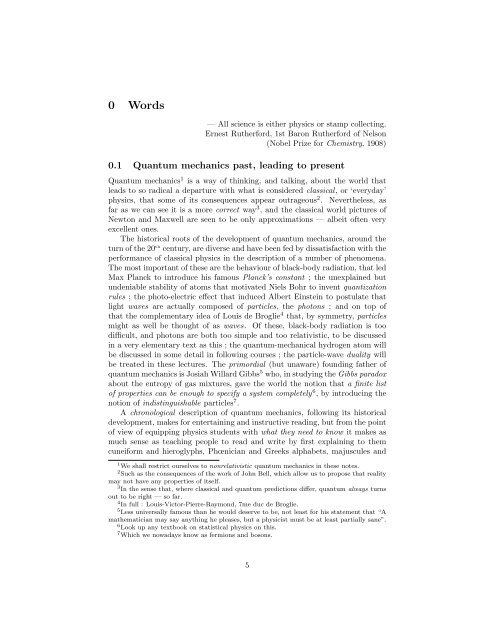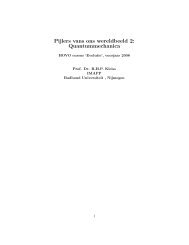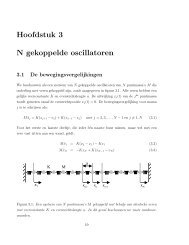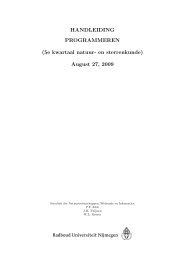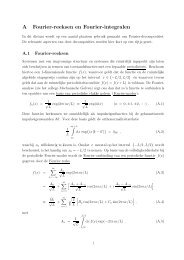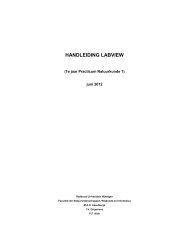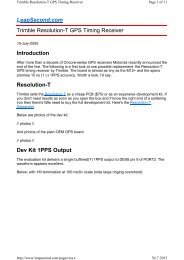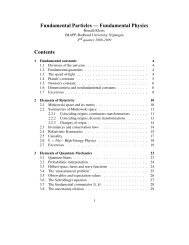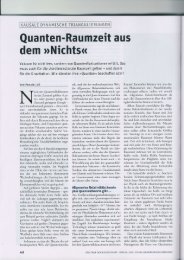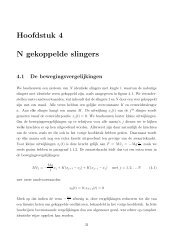Quantum Mechanics ¯h = 1.0545716 10 kg m sec
Quantum Mechanics ¯h = 1.0545716 10 kg m sec
Quantum Mechanics ¯h = 1.0545716 10 kg m sec
Create successful ePaper yourself
Turn your PDF publications into a flip-book with our unique Google optimized e-Paper software.
0 Words<br />
— All science is either physics or stamp collecting.<br />
Ernest Rutherford, 1st Baron Rutherford of Nelson<br />
(Nobel Prize for Chemistry, 1908)<br />
0.1 <strong>Quantum</strong> mechanics past, leading to present<br />
<strong>Quantum</strong> mechanics 1 is a way of thinking, and talking, about the world that<br />
leads to so radical a departure with what is considered classical, or ‘everyday’<br />
physics, that some of its consequences appear outrageous 2 . Nevertheless, as<br />
far as we can see it is a more correct way 3 , and the classical world pictures of<br />
Newton and Maxwell are seen to be only approximations — albeit often very<br />
excellent ones.<br />
The historical roots of the development of quantum mechanics, around the<br />
turn of the 20 th century, are diverse and have been fed by dissatisfaction with the<br />
performance of classical physics in the description of a number of phenomena.<br />
The most important of these are the behaviour of black-body radiation, that led<br />
Max Planck to introduce his famous Planck’s constant ; the unexplained but<br />
undeniable stability of atoms that motivated Niels Bohr to invent quantization<br />
rules ; the photo-electric effect that induced Albert Einstein to postulate that<br />
light waves are actually composed of particles, the photons ; and on top of<br />
that the complementary idea of Louis de Broglie 4 that, by symmetry, particles<br />
might as well be thought of as waves. Of these, black-body radiation is too<br />
difficult, and photons are both too simple and too relativistic, to be discussed<br />
in a very elementary text as this ; the quantum-mechanical hydrogen atom will<br />
be discussed in some detail in following courses ; the particle-wave duality will<br />
be treated in these lectures. The primordial (but unaware) founding father of<br />
quantum mechanics is Josiah Willard Gibbs 5 who, in studying the Gibbs paradox<br />
about the entropy of gas mixtures, gave the world the notion that a finite list<br />
of properties can be enough to specify a system completely 6 , by introducing the<br />
notion of indistinguishable particles 7 .<br />
A chronological description of quantum mechanics, following its historical<br />
development, makes for entertaining and instructive reading, but from the point<br />
of view of equipping physics students with what they need to know it makes as<br />
much sense as teaching people to read and write by first explaining to them<br />
cuneiform and hieroglyphs, Phœnician and Greeks alphabets, majuscules and<br />
1 We shall restrict ourselves to nonrelativistic quantum mechanics in these notes.<br />
2 Such as the consequences of the work of John Bell, which allow us to propose that reality<br />
may not have any properties of itself.<br />
3 In the sense that, where classical and quantum predictions differ, quantum always turns<br />
out to be right — so far.<br />
4 In full : Louis-Victor-Pierre-Raymond, 7me duc de Broglie.<br />
5 Less universally famous than he would deserve to be, not least for his statement that “A<br />
mathematician may say anything he pleases, but a physicist must be at least partially sane”.<br />
6 Look up any textbook on statistical physics on this.<br />
7 Which we nowadays know as fermions and bosons.<br />
5


